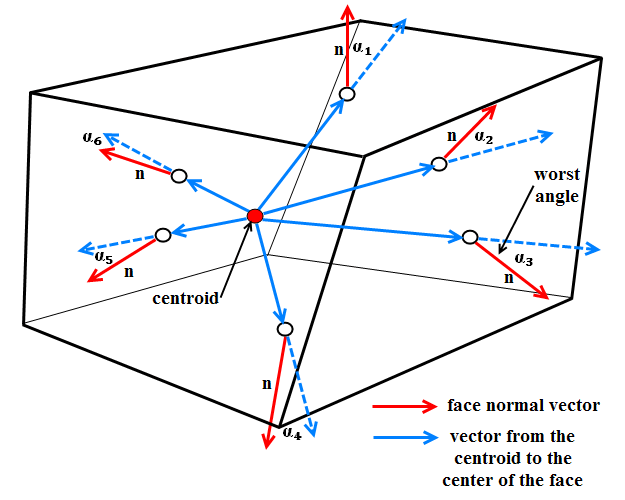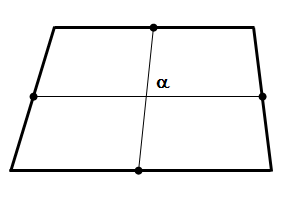This calculates the maximum skewness of an element. The skewness is defined differently for volume and surface elements. In all cases it is normalized so that 1 is ideal and 0 is the worst possible.
For a hexahedral element, skewness is defined as the normalized worst angle between each of the 6 face normals and the vector defined by the centroid of the hexahedron and the center of the face.
For tri elements, skewness is defined as the ratio between the area of the element and the area of an equilateral triangle having the same circumcircle.
For quad elements, the skew is calculated by first connecting the midpoints of each side with the midpoint of the opposite side, and finding the angle α as shown in the Figure 427: Skew for Quad Elements (the smaller of the two angles will be used so that α<90 degrees). The result will be normalized by dividing α by 90 degrees.




